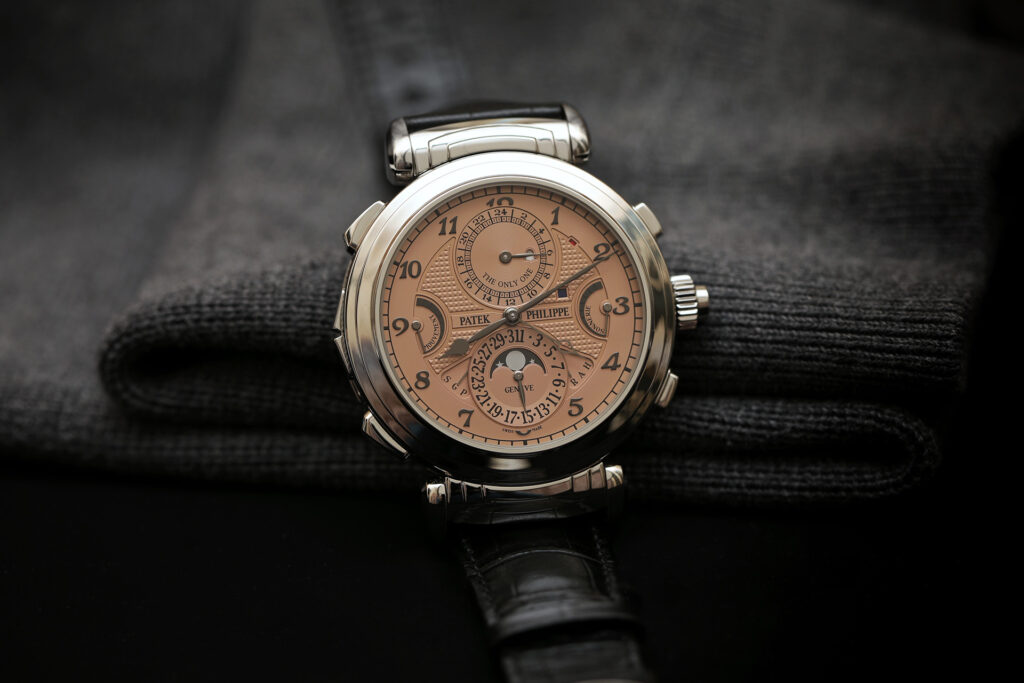Articles
The Evolution of Luxury Watches: A Look Back in Time
The Evolution of Luxury Watches: A Look Back in Time
From simple timekeeping devices to complex mechanical wonders, the evolution of luxury watches has been a journey that spans centuries. From the earliest wristwatches to the modern timepieces of today, Watches of Distinction has curated a collection that spans the history of luxury watches. In this article, we’ll take a look back in time to see how luxury watches have evolved.
The Early Days of Watches
The first wristwatch was invented in the late 19th century when pocket watches were the norm. The wristwatch was seen as a fad for women at first, but it quickly caught on with men as well. The first wristwatches were small and delicate and were powered by manual winding movements. These early watches were made with simple materials such as gold, silver, and leather.
The 1920s and 30s
The 1920s and 30s saw a rise in the popularity of wristwatches, as they became more accessible and affordable. This period also saw the introduction of new features such as the chronograph, which allowed users to time events with precision. Luxury watch brands like Rolex and Omega began to emerge during this time, offering more refined and high-end timepieces.
The 1940s and 50s
The 1940s and 50s saw a boom in watchmaking technology, as brands began to experiment with new materials and designs. The use of stainless steel became more common, and watch faces became more elaborate with the addition of sub-dials and other complications. The 1950s also saw the introduction of the first automatic movements, which eliminated the need for manual winding.
The 1960s and 70s
The 1960s and 70s saw a shift towards more colourful and adventurous watch designs, as brands like Omega, Rolex, and Breitling experimented with bold colours and shapes. The introduction of quartz movements in the 1970s also revolutionised watchmaking, making watches more accurate and affordable. However, this period also saw a decline in the popularity of mechanical watches.
The 1980s and 90s
The 1980s and 90s saw a resurgence of interest in mechanical watches, as brands like Patek Philippe, Audemars Piguet, and Vacheron Constantin introduced new and innovative designs. Luxury watch brands also began to collaborate with other industries, such as Formula 1 racing and the aviation industry, to create watches with specific functions and designs.
The 2000s and Beyond
The 2000s saw a focus on luxury and exclusivity, with brands like Richard Mille and Hublot introducing watches made with cutting-edge materials such as carbon fibre and sapphire crystal. The rise of the smartwatch also began to challenge traditional watchmaking, with brands like Apple and Samsung offering high-tech timepieces that combined functionality with style.
Watches of Distinction: Curating the Best of the Best
At Watches of Distinction, we have a passion for luxury watches and the stories behind them. Our collection of vintage and modern luxury watches spans the history of watchmaking, from the earliest wristwatches to the cutting-edge timepieces of today. Each watch in our collection is carefully selected for its rarity, quality, and design, and is verified by our team of experts to ensure its authenticity and condition. Why not check out some of our pre-1960s watches
FAQs
Q: What was the first luxury watch brand?
The first luxury watch brand was Patek Philippe, which was founded in 1839
Q: What is the most expensive luxury watch ever sold?
The most expensive luxury watch ever sold is the Patek Philippe Grandmaster Chime Ref. 6300A-010, which was sold at a charity auction in Geneva, Switzerland in November 2019 for $31 million USD (including buyer’s premium). This one-of-a-kind timepiece was created to celebrate Patek Philippe’s 175th anniversary and features a reversible case with 20 complications, including a grande and petite sonnerie, a minute repeater, and a perpetual calendar. The watch was purchased by an anonymous buyer and is now considered one of the most valuable watches in the world.
Q: What makes a luxury watch different from an ordinary watch?
Luxury watches are typically made of high-quality materials, such as gold, platinum, or titanium, and feature complex mechanisms that enable them to keep time accurately and reliably. They often have a classic, timeless design that is meant to be both functional and aesthetically pleasing.
Q: Are pre-owned luxury watches worth buying?
Yes, pre-owned luxury watches can be a great investment for collectors and enthusiasts. Many pre-owned watches are still in excellent condition. However, it’s important to buy from a reputable watch dealer and ensure that the watch has been properly authenticated and serviced.
Q: What should I look for when buying a luxury watch?
When buying a luxury watch, you should consider factors such as the brand reputation, the materials and quality of construction, the movement and complications, and the overall design and style. You should also consider your own preferences and needs, such as whether you want a dress watch or a sports watch, and whether you prefer a simple or more complex design.
Q: How do I maintain my luxury watch?
To maintain your luxury watch, you should follow the manufacturer’s instructions for care and maintenance. This may include regular watch servicing and cleaning, avoiding exposure to extreme temperatures and magnetic fields, and keeping the watch wound and running regularly. You should also store your watch in a safe, dry place when not in use.
Q: Can I resell my luxury watch?
Yes, you can resell your luxury watch if you no longer want it or need the money. However, the resale value of a luxury watch can vary depending on factors such as the brand, model, condition, and market demand. It’s a good idea to consult with a reputable watch dealer or appraiser to get an accurate estimate of your watch’s value.
